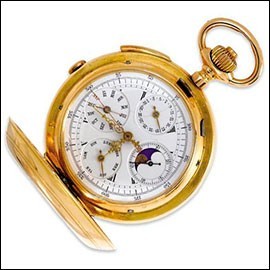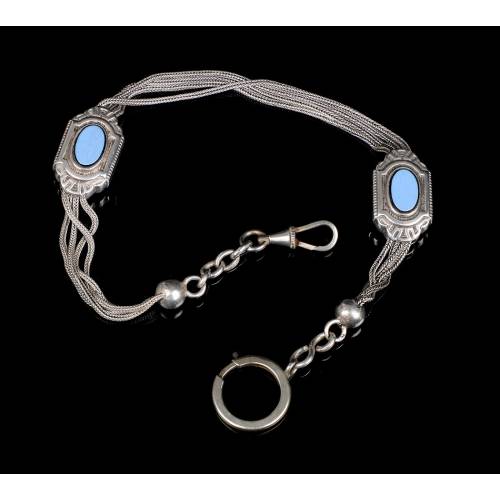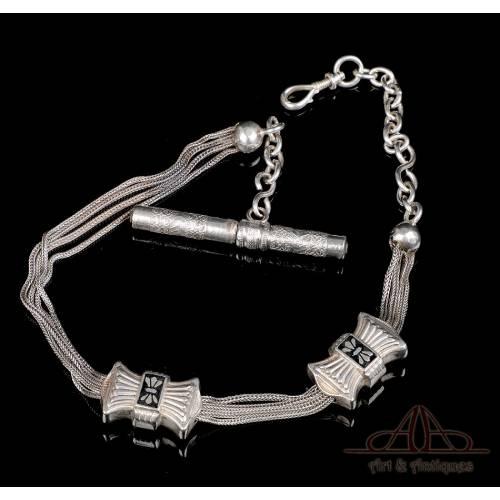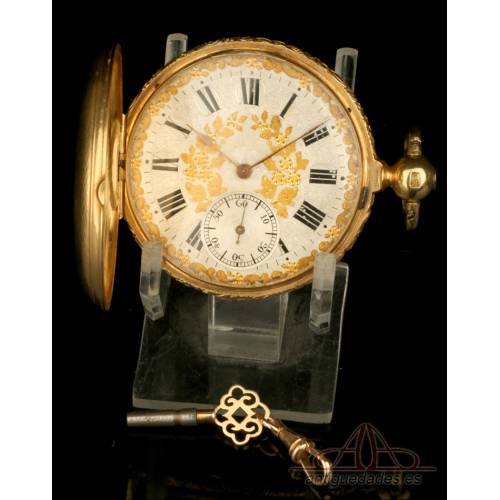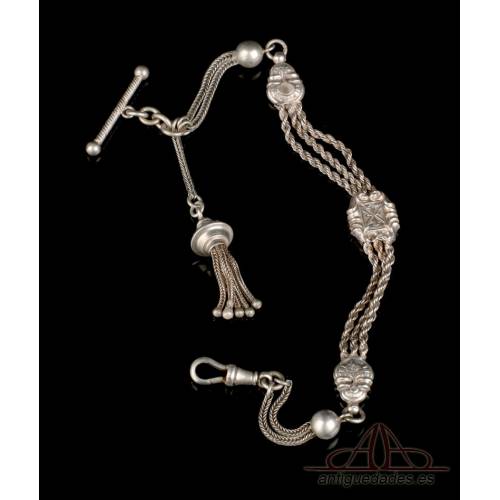Antique Pocket Watches
Antique pocket watches make up an exciting universe that includes authentic jewels made of precious materials, but also simple models full of charm and authenticity. In the days when wristwatches were still unknown, pocket watches were an indispensable accessory for measuring time. They were also elegant accessories that gave a glimpse of the s...
Antique pocket watches make up an exciting universe that includes authentic jewels made of precious materials, but also simple models full of charm and authenticity. In the days when wristwatches were still unknown, pocket watches were an indispensable accessory for measuring time. They were also elegant accessories that gave a glimpse of the social class and style of the wearer. Today, the fascination with antique pocket watches continues to live on: literary and aesthetic subgenres such as steampunk. which bases its imagery on the clocks, gears and mechanical contraptions of Victorian England and Jules Verne's France, have revived interest in these wonderful items. On the other hand, for any watch collector the pocket watch models arouse a very special interest, being highly sought after among experts.
History of antique pocket watches
The origins of the pocket watch can be traced back to the 15th century. They were then known as "portable watches" and their construction was made possible after the invention of the spring mechanism (coil spring). They were originally cylindrical or ovoid in shape, like the famous "Nuremberg eggs": slightly elongated spherical clocks, designed by the watchmaker Peter Heinlen in the 16th century in the city that gives them their name. During the 16th and 17th centuries, pocket watches were made in curious and whimsical shapes: animals, skulls, crosses... However, their mechanisms were not very precise. Moreover, they were luxury items intended only for the wealthy classes.
In the 18th century manufacturing was becoming cheaper and pocket watches became more affordable. As Adam Smith points out in his book The Wealth of Nations,at this time "a pocket watch which [...] could be purchased for twenty pounds, can now be purchased for twenty shillings". Already in the nineteenth century, the figure of the American Aaron L. Dennison is revealed as fundamental, to achieve mass production of such items through the company he founded in 1850 with Edward Howard. This company would later be known as the Waltham Watch Co, a pioneering firm and one of the leaders in the sector. After World War I, wristwatches began to replace pocket watches; however, to this day these models are still manufactured because of the enormous attraction they arouse.
Types of antique pocket watches
Among the many antique pocket watches that have survived to our days we find models with gold, silver, platinum, nielloed silver, silver-plated or gilded metal cases... There are also simple designs with plain covers and watches with elaborate decorations, engraved or inlaid. The watch case may have two, three or even four covers; some models include a dust cover that protects the mechanism, hidden behind the back cover. Antique silver and gold pocket watches usually have contrasts and marks that provide information about the country of manufacture, the goldsmith or silversmith, the weight of the silver or the karat of the gold. Gold or silver-plated pieces used to be marked with the word METAL.
High complication pocket watches. Unlike watches with simple mechanism, high complication watches include calendars, moon phase indicators, stopwatches and other devices along with the classic dial and seconds hand. They are high-quality models, highly appreciated among experts.
Antique pocket watches saboneta. The name derives from a French word meaning "little soap". These are the classic pocket watches with a front cover, which protects and covers the glass cover of the dial. To look at the time you have to press a button that opens the cover.
Antique pocket watches lepine. Unlike the saboneta watches, the lepine ones do not have a front cover. The dial is protected only by the glass panel. They are named after the French watchmaker Jean-Antoine Lepine, who in the 18th century created a special mechanism that made it possible to manufacture much flatter pocket watches.
Antique "miner's" pocket watches. In these watches the dial appears divided into 24 hours, which allows you to know what time it is and whether it is day or night. Also called "24-hour clocks", the name miner's comes from the work they do in the dark, where it is impossible to know whether it is day or night.
Antique pocket watches unfold hundreds of possibilities for the collector of special pieces. To start a collection is to step into an exciting adventure, where beauty goes hand in hand with precision and mechanical engineering.
Antique Silver Pocket Watch Chain. Enamel Decoration. 19th Century Antique Silver Pocket Watch...
Fine solid-silver pocket watch chain. Adorned with enameled silver barrettes. Complete. Fine solid-silver pocket watch chain....
225,00 € 340,00 €Antique Solid-Silver Pocket Watch Chain. 19th Century Antique Solid-Silver Pocket...
Antique solid-silver pocket watch chain with black enameled details. In fine condition. Hand-engraved winding key. Antique solid-silver pocket watch...
225,00 € 290,00 €Antique English French Royal Exchange 18K-Gold Pocket Watch. England, 1842 Antique English French Royal...
Magnificent 18K gold pocket watch with original key. Signed by French on the machinery. Working perfectly. Magnificent 18K gold pocket watch...
2 600,00 € 2 900,00 €Antique Albertina. Solid-Silver Pocket Watch Chain. Circa 1900 Antique Albertina. Solid-Silver...
Delicate solid-silver albertina pocket watch chain. Original piece from the early 20th century. Delicate solid-silver albertina...
Sold
New products
-

19th Century Antique Silver Chalice in Perfect Condition
19th century silver chalice in perfect condition with gilded cup....
-

Antique Spanish Silver Nave. Valladolid, Spain. 18th C. Ca 1775
Rare silver naveta from Valladolid, Spain, circa 1775. Rich vegetal...
-

Antique Gilt Bronze Clock with Cupid. France, circa 1850
Antique French gilt bronze clock with Cupid, circa 1850. Paris 7-day...
-

Spanish HMV Gramophone-Phonograph Model Monarch 13C, Barcelona ca 1915
Exceptional 1915 HMV Monarch 13C gramophone-phonograph with mahogany...
-

Antique Victoria Cigarette Rolling Machine, Spain c.1920
Automatic "Victoria" cigarette rolling machine, made in Spain around...
-

Elegant Antique Gilded Bronze Clock, France ca 1850 - Diana the Huntress
Antique French gilded bronze clock ca. 1850. Diana the Huntress seated...
-

Beautiful Antique Gilt Bronze Mantel Clock. France, circa 1840
Elegante reloj de sobremesa de bronce dorado al mercurio, circa 1840, en...
-

Antique Gilt Bronze Portico Clock with Four Columns. France, 19th Century
Elegant gilt bronze portico clock, France, 19th century. Working condition.
Specials
-

Antique Map of Asia by Johann Baptist Homann. Germany, 1730
Wonderful map of Asia edited by...

